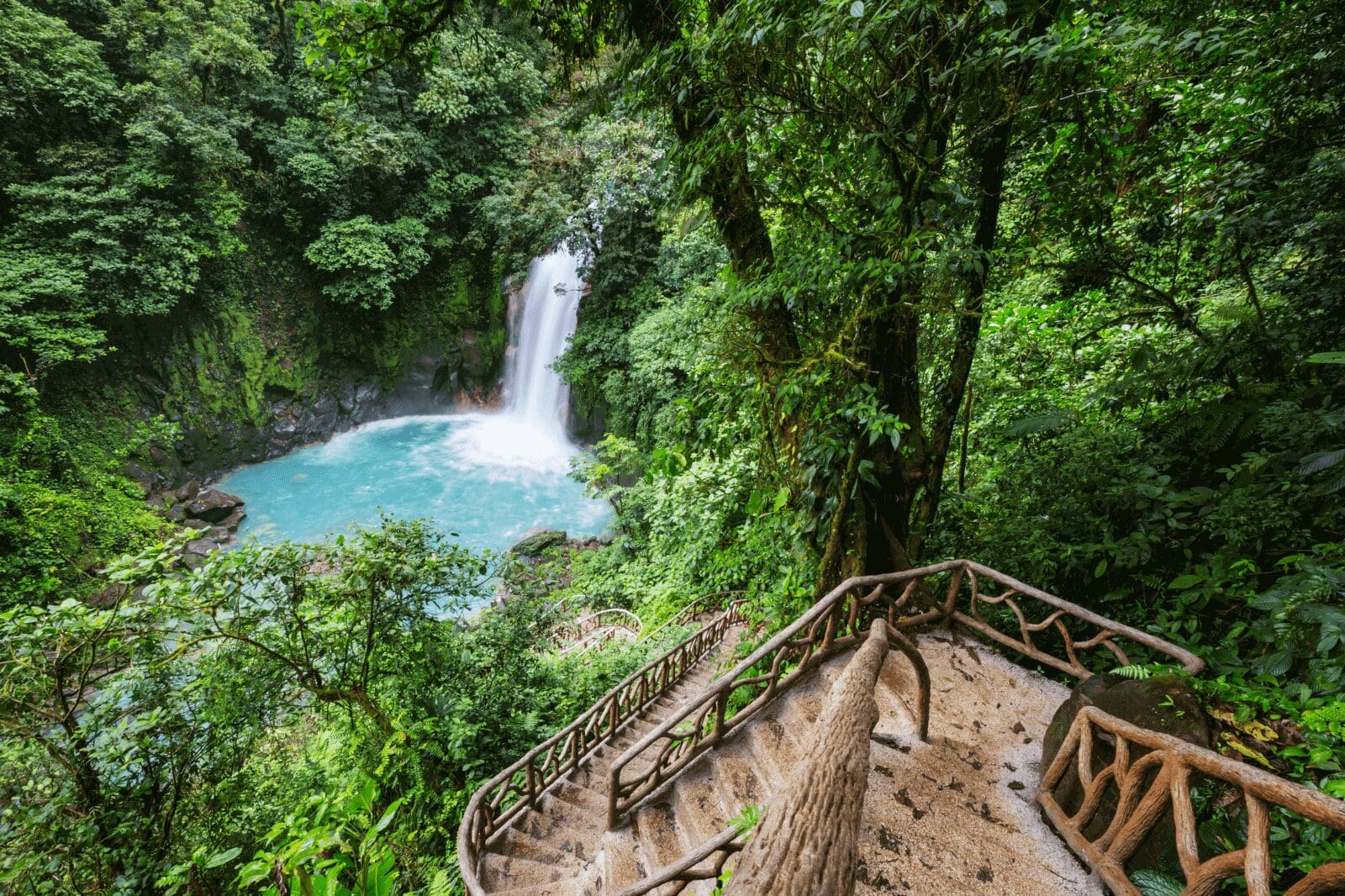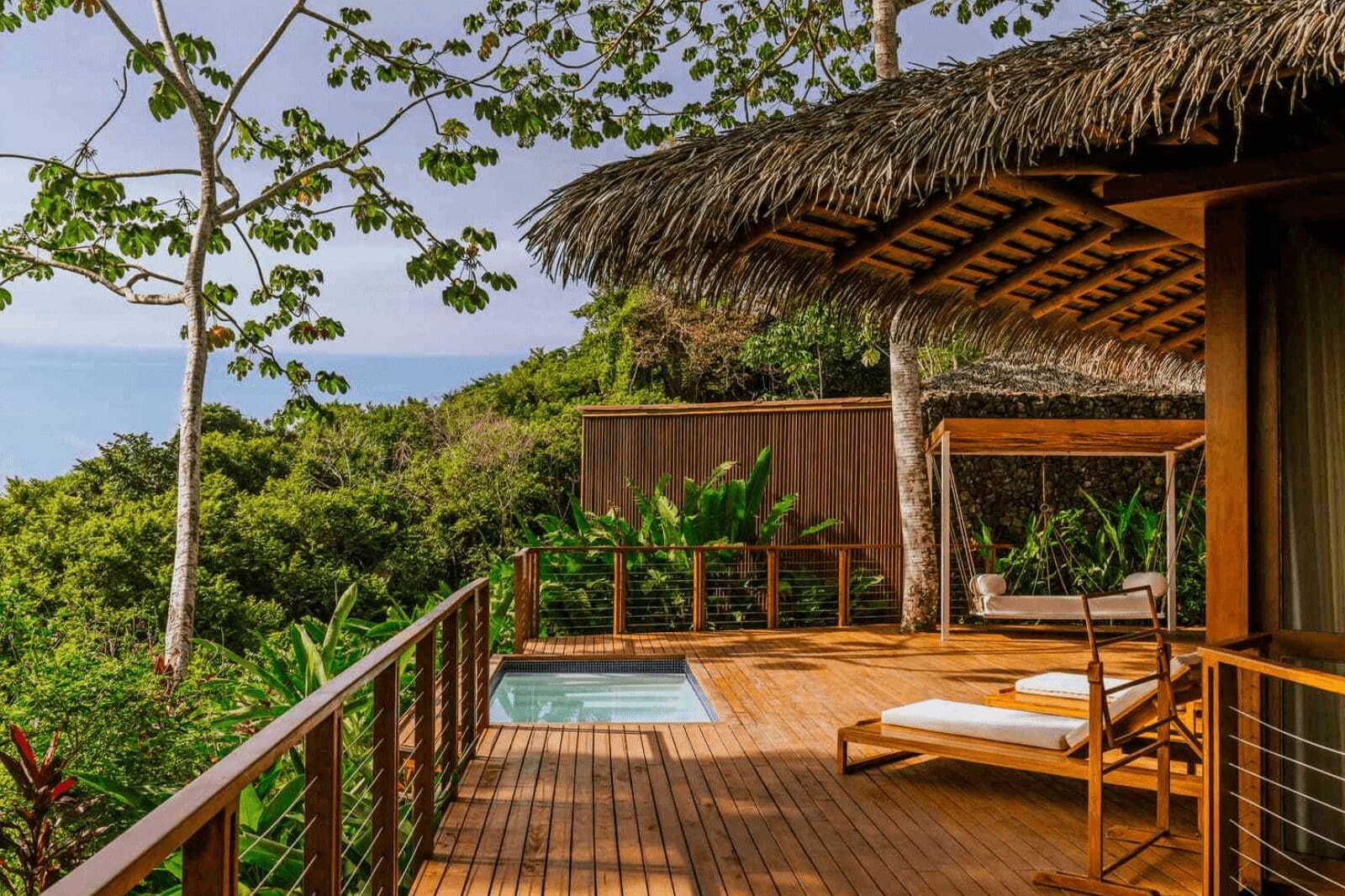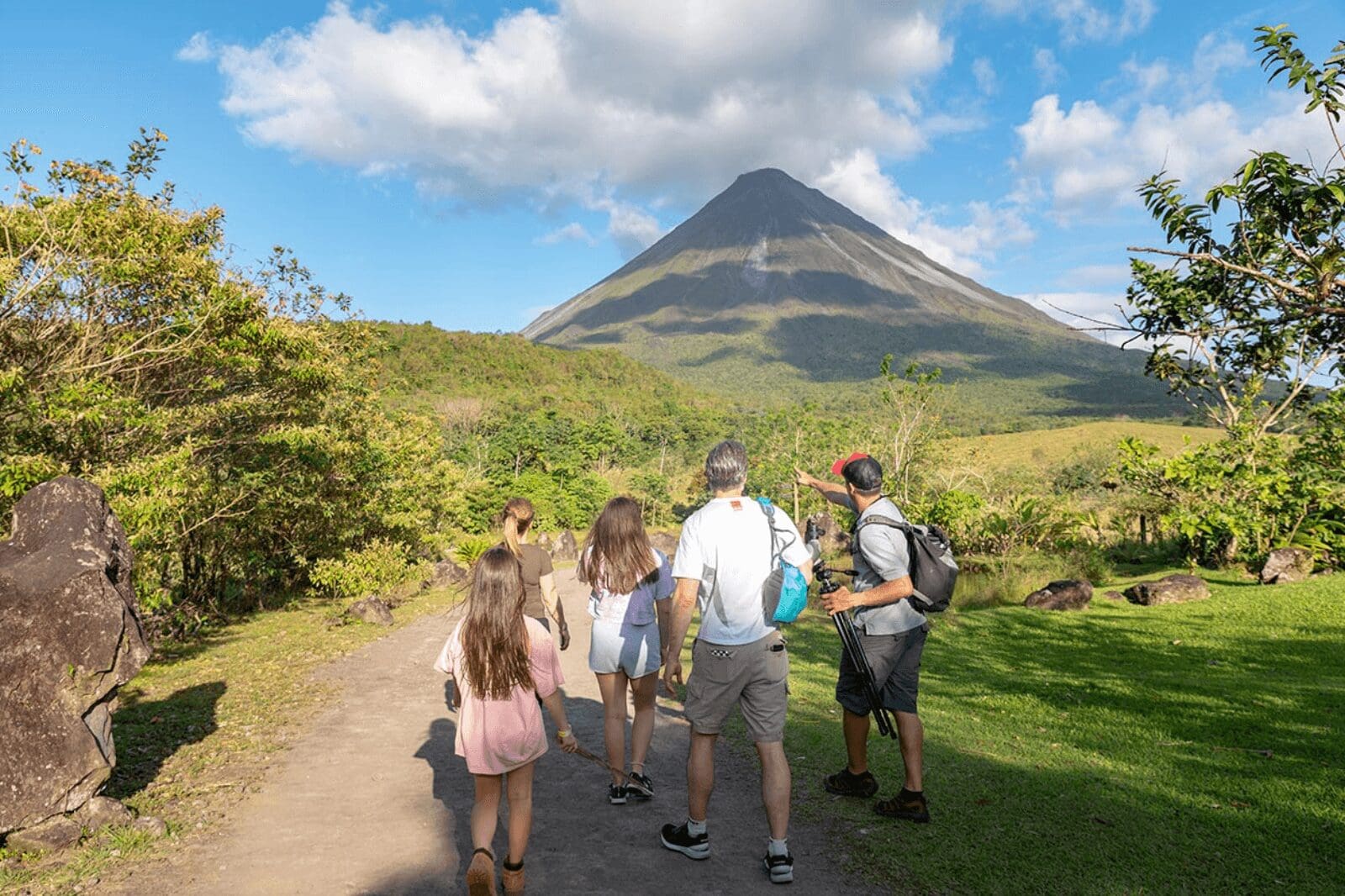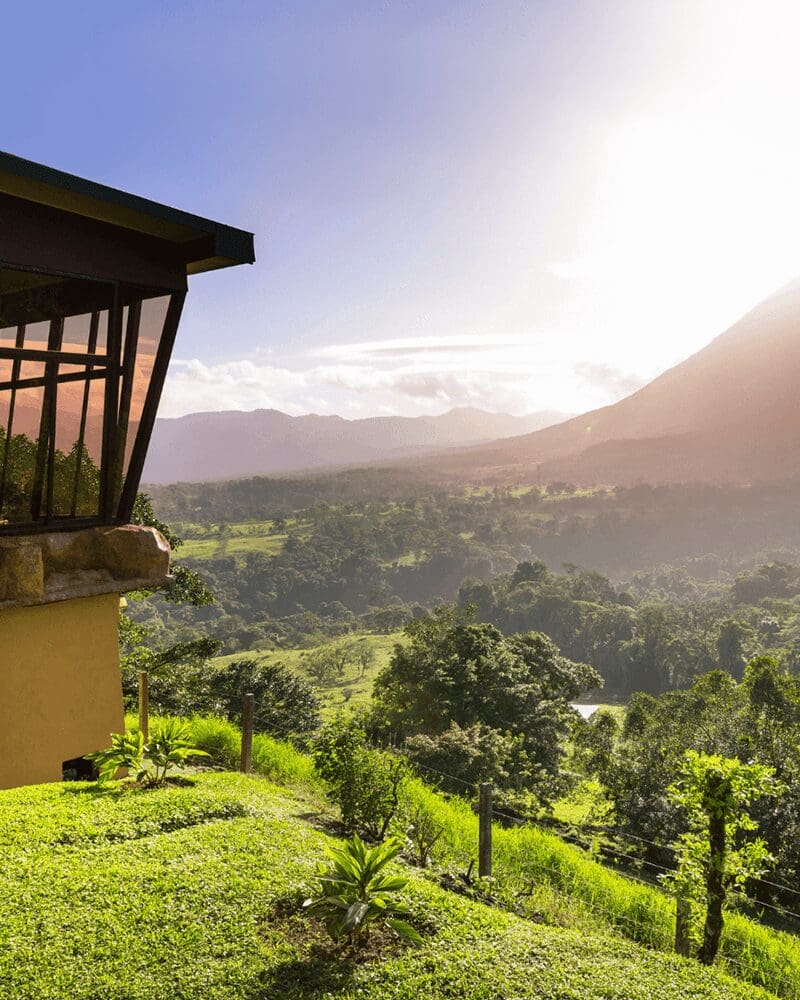Is Costa Rica expensive? You might’ve heard it called the Switzerland of Central America, and in many ways, that reputation holds. With a stable economy, strong infrastructure, and a deep commitment to conservation, Costa Rica consistently ranks among the happiest countries on Earth. But all that progress comes at a price.
So what should you actually expect to budget for a Costa Rica vacation?
And is Costa Rica still an accessible destination for couples, families, or honeymooners who aren’t chasing ultra-luxury—but still want comfort, nature, and a meaningful experience?
The short answer: yes, Costa Rica is expensive—especially compared to its regional neighbors.
But it’s expensive for reasons that tend to matter. And with the right approach and the support of a good travel advisor, you can plan a deeply rewarding trip without feeling like you need to liquidate your assets just to zipline through the rainforest.
Because this isn’t just another beach destination. Costa Rica is home to active volcanoes, mist-covered cloud forests, warm surf breaks, jungle lodges, scarlet macaws, and sloths. It’s one of the most biodiverse places on Earth, and one of the few where you can experience that biodiversity up close, comfortably, and safely. While it’s not necessarily the most budget-friendly destination out there, a vacation to Costa Rica is worth it.
Now let’s look at why Costa Rica is so expensive so you can avoid common Costa Rica travel mistakes and plan a rewarding vacation that doesn’t break the bank.
Why Is Costa Rica More Expensive Than Other Central America Destinations?

Costa Rica stands apart in ways that matter to travelers. It’s one of the safest and most ecologically rich countries in the Americas, with nearly a third of its land protected as parks or reserves. It has clean potable water, a strong commitment to conservation, and enough biodiversity to rival much larger countries. But the very things that make it so appealing, access to pristine nature, low-density development, and high safety standards, also influence what tourism costs here.
Hotels in many regions are small and intentionally spaced out. Strict environmental regulations limit where and how development happens, especially along coastlines and within forests. Instead of large resorts, you’ll find independent ecolodges, owner-run boutique hotels, and properties built to blend into their environment rather than dominate it. These places offer more privacy and character, but the limited capacity and remote locations directly impact price points.
There’s also the matter of imports. Costa Rica relies heavily on bringing in fuel, vehicles, building materials, and many consumer goods, all of which are subject to steep import taxes. That affects everything from the cost of living in Costa Rica to the cost of transportation to what it takes to run a hotel, outfit a kitchen, or maintain a guided tour experience in a remote area.
In addition to its environmental policies, Costa Rica has long invested in public services that improve everyday quality of Costa Rican life. Things like universal healthcare, education, and renewable energy. All of these factors combined contribute to the higher cost of travel in Costa Rica, but they also help explain why the experience here feels so different.
How Expensive Is Costa Rica? What It Actually Costs to Travel Costa Rica
Let’s explore some of the average prices in Costa Rica so you can better understand how much to budget for this iconic destination in Central America (without breaking the bank.)
Average Accommodation Costs

Traditional guesthouses and cabins generally range from $100 to $200 per night. These are clean and safe places, often family-run, with comfortable rooms, local breakfasts, and a welcoming atmosphere. You can find an airbnb with prices all over the map, but we typically don’t recommend airbnbs due to quality control issues.
In the $200 to $400 range, you’ll find small boutique hotels and eco-lodges with thoughtful design, strong sustainability practices, and on-site dining. We recommend boutique hotels to most of our clients. They span a wide range of price points and offer experiences that are memorable, personal, and deeply connected to their surroundings. These aren’t large sparkling resorts or international chains—they’re independently owned properties set along the coast with ocean views, or tucked into the jungle where wildlife passes right by your porch. If you want to avoid the tourist trap of chain hotels, boutique properties are not crazy expensive and can be an excellent option.
Higher-end properties can start around $500 per night and easily exceed $1,000 in peak season or at exclusive locations. Expect to pay at least $500+ at ultra-luxury resorts. In areas like the Papagayo Peninsula, resorts like the Four Seasons start around $850 per night and often range from $1,200 to $1,800 for premium rooms or suites during high season. We don’t typically recommend all-inclusives in Costa Rica.
Average Transportation Costs
Getting around Costa Rica takes planning, especially if you’re visiting multiple regions.
Public transportation is an option between main hubs but not what we recommend to most travelers. While it might sound appealing if you’re a budget traveler, the local bus rarely aligns with the type of trip most visitors want to take.
Private transfers typically cost between $150 and $400 per leg, depending on distance. They’re the most comfortable and reliable option, especially when covering long routes or reaching more remote destinations. Domestic flights are commonly used to connect places like San José to the Osa Peninsula or the Nicoya coast, and generally range from $100 to $250 one way.
Renting a car offers flexibility and independence. Daily rates cost around $60 to $120 with full insurance included, which is strongly recommended, as many local roads are unpaved or affected by seasonal conditions. Without a car, shared shuttles are available between popular towns and tourist hubs, but routes can be infrequent and time-consuming if you’re on a multi-stop itinerary, and have a reputation for canceling last minute if they don’t fill enough seats.
Average Activities and Tours Cost

Certified naturalist guides and epic Costa Rica tours tend to range from $100 USD per person and up, depending on the type of experience and level of customization. Wildlife hikes, early morning birding tours, coffee or cacao farm visits, and forest night walks are usually on the lower end. Waterfall hikes, white water rafting, and private boating trips often fall higher, especially when transportation or meals are included.
National park entry fees are typically $10 to $20 per person. Some experiences, like kayaking in mangroves or horseback riding in mountain towns, are available at more modest rates, especially when arranged locally.
One of our best money saving tips? Come to Costa Rica with an itinerary designed by a local Costa Rica travel expert, like Explore the Americas. We’ll curate the best experiences for your unique interests, so you can experience for yourself why this Central American country is so spectacular—without wasting travel funds on overhyped activities and accommodation.
Get in touch to start planning your Costa Rica vacation today.
What Is the Average Cost of a Meal in Costa Rica?
At a roadside soda or local café, a generous plate of casado (rice, beans, plantains, salad, and grilled meat or fish) usually costs between $8 and $15. These informal local food spots are often family-owned, and the food is fresh and home-cooked.
In tourist areas with a stronger international presence like Jaco and Tamarindo, expect to pay between $20 to $40 per person for mains and a drink. Lodge restaurants and full-board properties often include meals in their nightly rates, especially in remote locations where there are no outside dining options. Higher-end resorts can be quite expensive and feature chef-led tasting menus or à la carte service, with dinner easily reaching $75 to $100 per person including wine or cocktails.
Looking for the best insider tips on where to eat and what to do across Costa Rica? Download our FREE Costa Rica Google map!
It’s packed with all our hand-picked favorites, including: Hidden Waterfalls, National Parks, Must-Try Restaurants & Cafés, Local Gems, Airstrips & so much more!
What You Get for the Investment When You Visit Costa Rica

Higher prices don’t always mean higher quality, but in Costa Rica, they often reflect real value. Entry fees support national parks. Rates at ecolodges fund reforestation programs or community education. Even small guesthouses operate with higher overhead than similar places elsewhere, thanks to imported goods, energy costs, and strong labor standards.
But beyond the ethics, there’s also the experience. Costa Rica isn’t just touristy. Guides here are often certified, multilingual, and deeply knowledgeable about the natural world. Costa Rica might be one of the most expensive destinations in Central America, but if you know what to expect to spend, the investment is worth it.
There’s also a sense of ease about traveling to places in Costa Rica that’s hard to quantify. (It’s why so many expats call Costa Rica home!) You’re not constantly negotiating transportation or worrying about logistics. You’re not second-guessing safety or filtering every choice through cost alone.
It’s also worth noting that Costa Rica can be affordable if you’re on a budget. By avoiding the most expensive places, choosing budget-friendly accommodation, and eating like a local, you can still have a memorable vacation while cutting costs.
How to Travel Smarter with a Costa Rica Travel Specialist

Planning a trip to Costa Rica is about more than booking hotels and checking boxes. The right itinerary isn’t just efficient—it’s personal, well-paced, and built around what you actually want to experience. Knowing how to structure your Costa Rica travel itinerary can make the difference between a week spent in transit and a week of relaxed discovery.
When you work with a travel specialist, you’re getting far more than a list of recommendations. You get a custom itinerary tailored to your travel style and budget, designed by someone who knows Costa Rica inside and out. That means a seamless itinerary, insider tips, and real-time support while you travel, so if plans shift, you’re not left figuring it out on your own.
You’ll also get access to our vetted guides and curated experiences- the kind you won’t find in a ChatGPT search or travel blog. And in many cases, our local connections open the door to room upgrades and special perks, too.
All of that, without paying more than you would booking it yourself. It’s a better way to travel, more confidence, fewer question marks.

+ show Comments
- Hide Comments
add a comment